| By Kass Minor
There are days where my “why” in the work of teaching and learning is re-affirmed, and yesterday was one of them. Thanks to PS 94, Principal Christina Gonzalez, Assistant Principals Rose, Doris, Jean Marie, Sharon, Instructional Coach Ashley, and all the educators and kids and families who’ve fostered a community where something like joyful learning can manifest, with intention–with a research base and personal commitments, wide-scale. Recently, we continued our inquiry into joyful learning. This inquiry was, and continues to be communal, underscored with questions and possibilities generated by the community, and overall, very buzzy! First, we created local and shared understanding on what Joy meant for the community, collectively. [No one person, especially from the outside, can pose their ideas of joy onto a people. It’s gotta be co-constructed.] 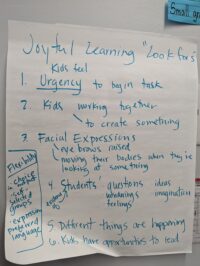 Educator micro-communities work together to co-construct their understandings of joy as it can manifest in classroom space. Then, we tackled our conceptual understanding of it really means to learn in a space like school. “Learning in school” might seem like a no-brainer, but many times what we see is compliance and performance as opposed to deep, authentic learning.
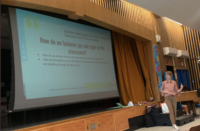 Kass parsing out big questions generated by the community on possibilities for balancing joy and rigor within classroom spaces. We grappled with balancing standards, student-centeredness and joy. We interrogated the term “rigor”. [Spoiler: rigor does not mean super hard and challenging-rather, it means that you are teaching within a child’s ZPD and are using their schema and personhood to develop new understandings] 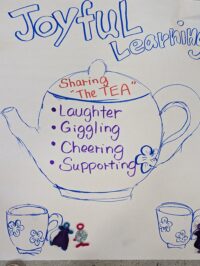 Teachers used various representations and visual art to document their co-constructed understandings on joy. We self-identified how, when, and why people in school [including teachers] experience adrenaline-based learning vs. joyful learning. Finally, we co-constructed community understanding of attributes of joyful learning as they already manifest, or could manifest, in PS 94 classrooms. During this time, the whole community worked in micro-communities, used lots of different materials, including play dough, pipe cleaners, charts, markers. Some groups even performed construction of joy using drama and tableau. 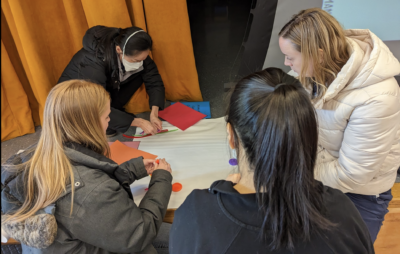 Educators work in micro communities to co-construct their understandings of joy it manifests in classrooms within their larger community.
Long story short: Inquiry-based learning is beautiful. Joy can be a buzzword, or it can be real. To do the work of scaling up something as powerful and human-centered as joyful learning, the whole community has to be a part of the initiation and investment of the inquiry-based journey. Local and collective understanding is key. —— To learn more about developing school-wide inquiry on joyful learning, check out Kass’s book Teaching Fiercely: Spreading Joy and Justice in Our Schools, releasing May 2, 2023.
|
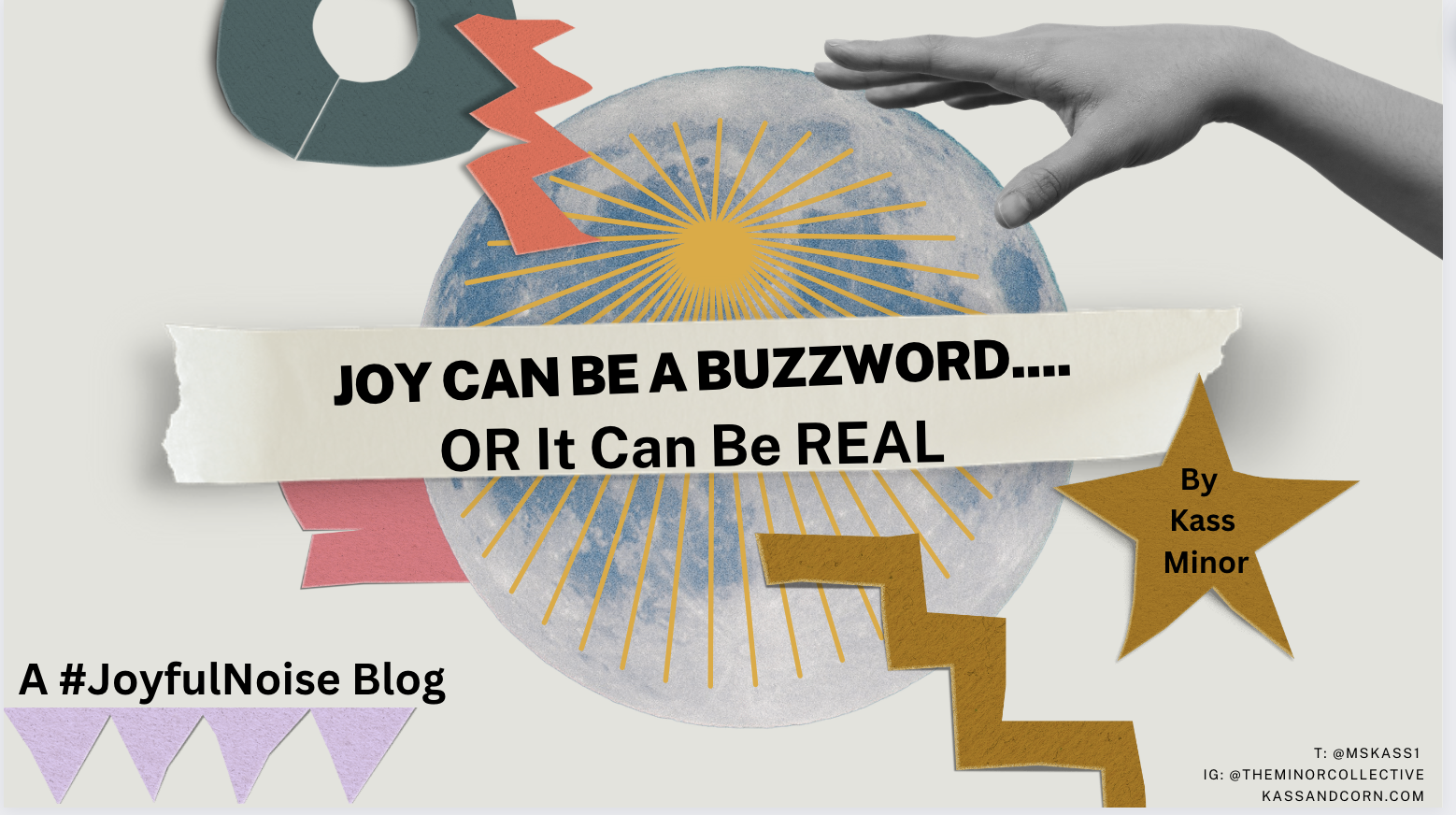
It was a magical day at 94. In looking at the work the staff engaged in together and as we use this work to deepen our understanding of what it means to provide meaningful experiences we are understanding that joy is well deserving and only takes place when is co-created with our teams and our students. I am so excited for the work ahead of us!- Cristina Gonzalez